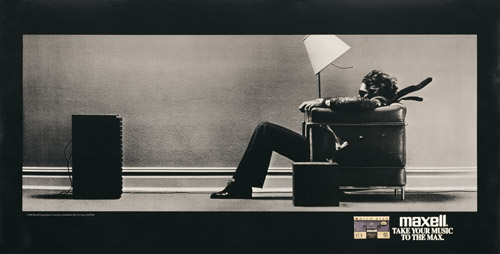(Re)Defining the High-End Audio Experience
For practical purposes, the authentic high-end audio tag applied to products that sold for thousands, not hundreds of dollars. As such, it seems safe to suggest that the market for this obsession has typically catered to a wealthier, if passionate minority. The good news is, as we observe time and again, ceaseless innovations in CE result in optimal quality at lower prices.
In a roundabout way, the same device that initially stole audio’s thunder may become a vital battleground for future sales. Even as digital displays get bigger and better (with price points dropping correspondingly) and we eagerly anticipate the advances 4K should deliver, at a certain point sound quality will once again become a coveted feature of the “full” home experience.
“Now is the time for CE manufacturers to make great audio the selling point,” opines Paul Geller, SVP at Grooveshark. “I wish my wonderful new display with a 60Hz refresh rate had better speakers. I like 60Hz, but I needed to get a soundbar!”
Soundbars, initially embraced as a cost-efficient alternative to more expensive, and bulky, surround-sound systems, are now genuine solutions in themselves. Still affordable, there are also a variety of more robust models with higher price points and improved performance. Soundbars offer a less complicated, virtually wireless solution and CEA expects sales to increase year-over-year through 2016.
Another excellent example of technology meeting (or creating) consumer demand is the advent of high-performance receivers that integrate connectivity. We may not be able to wrest the MP3 player or smartphone from a would-be-customer’s hand, but there is now a best-of-both-worlds scenario: a receiver that allows us to “plug and play” at home. Certainly, the image of anyone listening to digital files through home speakers is anathema to the old-school audiophile, but those consumers were never part of the equation in the first place. These home audio products specialize in being multi-functional, and the implementation of MP3 capability, along with Ethernet and HDMI integration enables a greatly enhanced in-home listening experience. Between improved amplifiers, soundbars and these more robust receiver capabilities, the previously dubious proposition of better audio in the home is now not only feasible, but affordable.
A Case Study: Headphones
If we do not already do so, we will someday regard premium headphones as the category that provided a gateway to higher quality audio—and a salvation of sorts for the entire industry. Anyone who has been paying attention understands that headphones sales are not expected to slacken anytime soon. It is instructive to consider that ten or even five years ago the suggestion that headphones, much less designer headphones, could be profitable with price points in the hundreds of dollars would be dismissed as outlandish. And yet, at least in hindsight, it not only makes sense, it seems inexorable.
People have increasingly plugged into their devices during their commutes, in their cubicles, while they exercise or relax on the couch. There was, quite simply, a market demand for ways to bolster these experiences and headphones met—even exceeded—this desire. It remains remarkable (even if it now feels predictable) that devices being given away for free on airplanes could be transfigured into high(er) end audio solutions as well as fashion accessories.
In fact, the cultural cachet of premium headphones represents a marketing goldmine. It is, for example, all but impossible to see professional athletes entering a stadium without their ever-present headsets. The authoritative case study here, of course, involves the earth-shaking success of Andre “Dr. Dre” Young’s collaboration with Monster Cable. The brand Beats by Dr. Dre became arguably the most successful and high-profile celebrity-endorsed (and, in this case, created) product of the 21st Century.
If imitation is the sincerest form of flattery, Dr. Dre should be as flattered as he is wealthy: other headphone brands have hastily been formed, and existing manufacturers have sought luminaries to associate themselves with. Now we have Soul by Ludacris, The House of Marley and Lady Gaga, just to name three of the better known entities competing for share in a seller’s market.
The phenomenal sales can certainly be attributed in part to a very American attraction to icon-driven product placement: seeing athletes and rock stars wearing (not to mention designing or endorsing) headphones anyone can purchase serves as an irresistible enticement. But aside from the social and cultural implications, these products have been advertised, ingeniously, as superior solutions. Not long ago, high-end headphones were catered to audiophiles or frequent travelers in search of the best noise-cancellation options. Dr. Dre’s promise to deliver the type of sound quality producers hear in the studio proved to be marketing catnip. The products were hip, but they also allegedly supplied the type of sound quality never attainable in the past. We now see manufacturers like Skullcandy forging a lifestyle connection catering to the skateboarding and sporting community, which is 180 degrees apart from the old Bose target audience.

